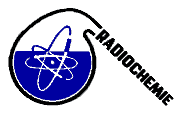Speaker
Mr
Stefan Bister
(Leibniz University Hanover; Center for Radiation Protection and Radioecology)
Description
The Mulde River, a tributary of the Elbe River in east-central Germany, is formed by the confluence of the Freiberger Mulde and the Zwickauer Mulde, both rising from the Erzgebirge. Running north, the two rivers merge near the small village of Sermuth to form the Vereinigte Mulde, which flows into the Elbe River near Dessau. The Erzgebirge or Ore Mountains are a mountain range, which is located at the border between Saxony / Germany and the Czech Republic. Due to its rich uranium deposits the area of the Zwickauer Mulde River became the world’s third largest uranium supplier during the time of the Warsaw Pact. Today, clean-up of the legacy of the former mining and milling industry represents one of the largest remediation projects in progress.
Being part of the project ‘Transport and availability of uranium and decay products in alluvial soils of the Mulde River’, this work deals with the investigation of radionuclides in the water of the Mulde River. The radionuclide contents of water and sediment indicate the overall condition of a river, with the water showing a faster response to variations. 20 samples were collected along the course of the rivers Zwickauer Mulde and Vereinigte Mulde between the city of Aue in the Erzgebirge and the Saxon border. For comparison, further samples were taken at the headwaters of the Zwickauer Mulde, along the Freiberger Mulde and the Leine River (Hannover), respectively. A total of 26 samples of water were taken and analysed for uranium, polonium-210, and radium-226 content using alpha-spectroscopy, liquid scintillation counting, and mass spectroscopy, respectively. The work focuses on present contaminations deriving from tributary streams or river sediments and the detection of changes as a result of remediation effects. Own results are compared with results from earlier investigations, carried out from 1991 to 1993.
Primary author
Mr
Stefan Bister
(Leibniz University Hanover; Center for Radiation Protection and Radioecology)
Co-authors
Dr
Beate Riebe
(Leibniz University Hanover; Center for Radiation Protection and Radioecology)
Mr
Florian Koenn
(Fachhochschule Aachen, Campus Jülich, Fachbereich Chemie und Biotechnologie)
Mr
Jonny Birkhan
(Leibniz University Hanover; Center for Radiation Protection and Radioecology)
Ms
Maruta Bunka
(Leibniz University Hanover; Center for Radiation Protection and Radioecology)
Prof.
Rolf Michel
(Leibniz University Hanover; Center for Radiation Protection and Radioecology)
Mr
Torben Lüllau
(Leibniz University Hanover; Center for Radiation Protection and Radioecology)

